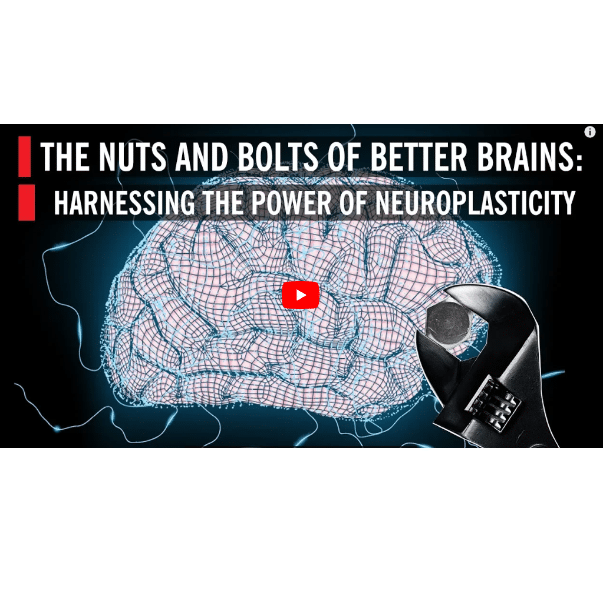World Science Festival
The Nuts & Bolts of Better Brains.
Harnessing the Power of Neuroplasticity
Panel Discussion
Host
Guy Mckhann, Neuroscientist
Panelists
Carla Shatz, Stanford University
Nim Tottenham, PhD, Columbia University
Aluaro Pascual-Leone, MD, PhD, Harvard Medical School
Definition
The brain can reorganize itself by forming new neural connections throughout life, responding to new situations or environmental changes.
Medicine.net
Neuroplasticity is an essential feature of the brain in early life. As the brain develops, far more neural connections are produced than will be needed. This gives the brain incredible adaptability as the young person encounters a new environment.
As young people grow and develop, there are critical periods for every skill, such as playing music, speaking their native language, creating artwork, etc. As the developmental process proceeds, it becomes evident that some connections are not being called on to function and are pruned from the final configuration. Those connections with frequent traffic become stable and resistant to change.
However, as the neural configuration becomes more defined, adults often encounter difficulties learning new languages and skills, starkly contrasting with the ease of learning experienced in their youth.
This panel was convened with a crucial mission to discuss research to regain neuroplasticity in later years. The goal is to make learning in adulthood easier, a challenging task, particularly in disrupting stable connections that are crucial for maintaining lifelong required skills.
Content Link: The Nuts and Bolts of Better Brains: Harnessing the Power of Neuroplasticity – YouTube
Before commenting, please review our privacy policy: www.findnewcontent.com/privacy/



